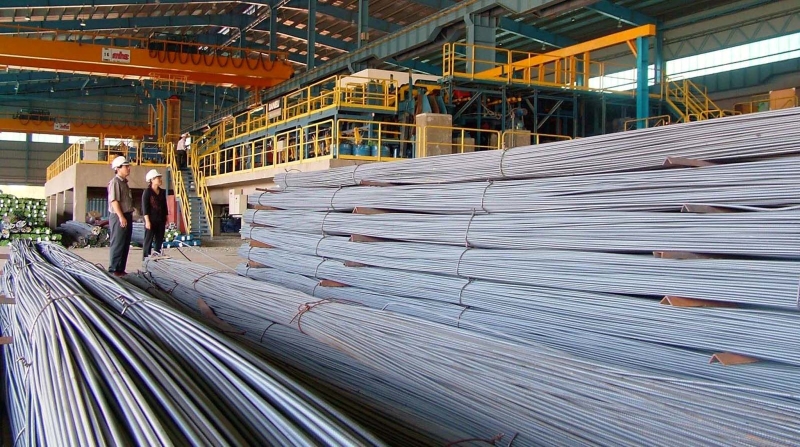Vietnam trade ministry proposes tightening steel exports
The important issue is to have long-term solutions to balance supply-demand and enhance production capabilities of local steel firms, said an expert.
Amid soaring steel prices, the Ministry of Industry and Trade (MoIT) is set to propose tightening exports of steel products that are in hot demand domestically.
Meanwhile, the ministry would help speed up the construction of steel plants in a move to boost domestic steel production.
“For certain steel products with high price volatility, the MoIT suggests the government to lower preferential import tariffs,” it noted.
Regarding this issue, Deputy Director of the Tax Policy Department under the Ministry of Finance (MoF) Truong Ba Tuan, urged a cautious approach is needed if the government is to revise existing import duty for finished steel products, saying this is important to ensure sustainable development of the local steel industry.
Tuan attributed the rising steel prices to a surge in steel ingots of 37-39% in the global market against last October, which came as a result of rising demand for steel from the Chinese market.
In April, prices of steel ingots increased by US$50-55 per ton against the previous month, while those of in the domestic market rose by VND1,450 per kilogram.
The situation is not helped by resumption of construction activities in major cities in the first quarter of this year, including Hanoi and Ho Chi Minh City, as the government continues to push for public investment.
Since January, steel producers announced their new pricing policies by an increase of VND300-900 per kilogram for steel products. Such increases later rose to VND1,600-1,700 for a kilogram in April, taking prices for steel products at plant from VND16,200-17,800 (US$0.71-0.78) per kilogram (not included 10% VAT and commission fees).
| Steel production at Thai Nguyen Steel Plant. Photo: Hoai Nam |
According to Tuan, to support domestic steel firms, the import duty under the most-favored-nation (MFN) status for input materials of steel production are set at 0-3% depending on each type of product.
“Low import duty for input materials help local steel firms reduce their operational cots and expand businesses,” he said.
In terms of finished steel products for the construction, the preferential import rates are in range of 15-20%, mainly imported from China and India.
Vietnam is also members of 14 free trade agreements, including in the ASEAN Trade in Goods Agreement (ATIGA), Vietnam-Japan Free Trade Agreement (VJFTA), and Vietnam-South Korea Free Trade Agreement (VKFTA), whereby import duties have been set at low levels.
“Current import duties are in line with local laws, the current development of the steel industry and Vietnam’s commitments in different trade agreements,” said Tuan.
Instead of revising the import tariff, Tuan suggested Vietnam could modify the self-protection duties on steel ingots and construction steel products to lower prices.
At present, tariff on imported steel ingots is set at 13.3% and expected to be reduced to 11.3% by March 22, 2022. For long steel products, the rate is determined in phases, with the current rate of 7.9% and going down to 6.4% in March 2022.
“The important issue would be to have long-term solutions to balance supply-demand and enhance production capabilities of local steel firms,” Tuan stressed.
Dang Cong Khoi, deputy director of the Price Management under the Ministry of Finance, said every month, the consumer price index, a gauge for inflation, could further expand by 0.66% while the inflation remains below 4% target.
“However, inflationary pressure would continue to rise amid growing input material prices for production,” Khoi noted.










